

How to Cure and Smoke Your Own Ham

You will definitely need a kitchen scale for this project. I have one like this, which is super easy to use and clean.
A medium-sized glass bowl, large enough to hold your cut of meat, plus a little extra space.
A ceramic ramekin or two to set the meat on inside the larger bowl.
 Ingredients:
Ingredients:
- A nice piece of pork to cure, skin-on if possible– I have made three hams so far, all with a leg cut, deboned and bound with butcher’s twine
- Sea Salt— finely ground (find it here)
- Curing Salts, or Prague Powder (find it here)
- (note: you can cure meat with out the curing salts, which contain nitrates, but you will not keep that nice pink color, and you have to be a little more careful about spoilage.)
- Muscovado Sugar (find it here) or other flavorful natural sugar
- Ground Allspice (find it here)
- Ground Cardamon (find it here)
- Ground Cloves (find it here)
- Ground Black Pepper
*There is definitely room for you to monkey around with the spice blend! I just made mine up based on what I thought would be good– the important elements are the salt, curing salts, and sugar. Juniper berries and rosemary are a combination I’d love to incorporate next time. That said, I really liked how the spice blend I chose came out, and you probably will, too.
1. It all begins with some math. Start by weighing your piece of pork. You will mix your salts according to the amount of meat you will be curing. It’s not hard, so even math-phobes can do it, I promise. Get a calculator out if you need it. For each kilogram of meat, you will use a mere 2.5g of the curing salts/ Prague Powder; 30g sea salt and 5g sugar. Weigh that out and put it in a bowl. Add about 1/4 tsp. of each of the spices you’ll be using. This is pretty inexact, just don’t go crazy with the spices. Mix your curing blend together.
2. Rub the salts all over your pork. Get into all the nooks and crannies you can– the full amount should be used! I had to open up the bottom part of the pork a little to press the mixture in.
 3. Set your ramekin(s) inside the glass bowl, and put your salty meat on it. This is how you will let the moisture drain out of the pork and away from the meat.
3. Set your ramekin(s) inside the glass bowl, and put your salty meat on it. This is how you will let the moisture drain out of the pork and away from the meat.
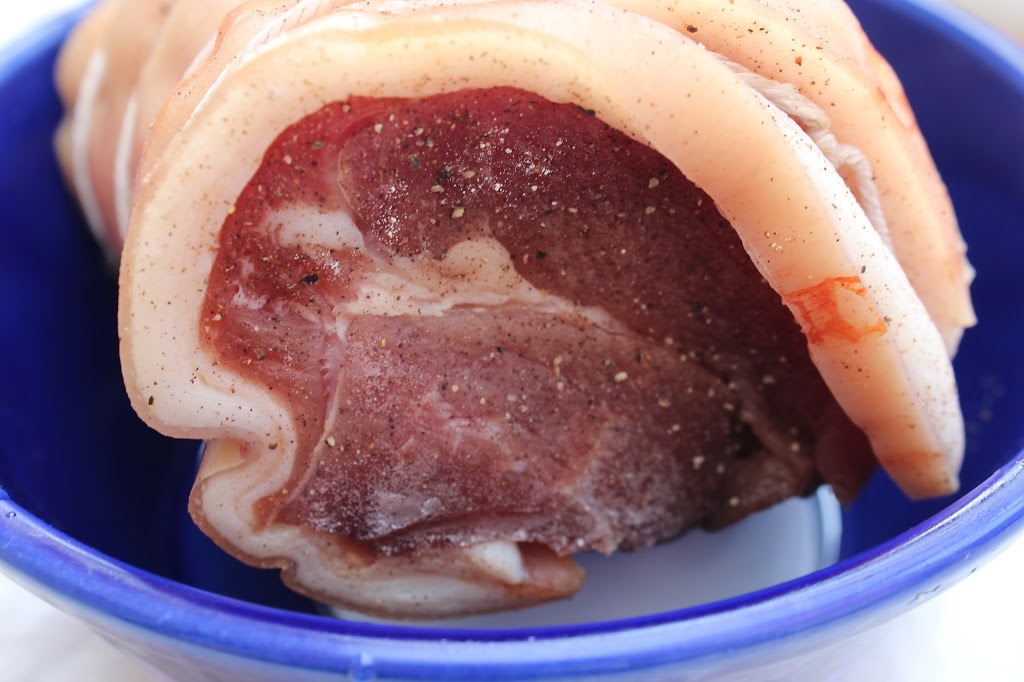
 5. Once you’ve reached the right number of days for your ham, take it out of the fridge, and give it a good rinse. Get all of the curing solution off, and pat it dry with a clean dish towel. Wash the bowl and ramekin, and set it back in the fridge for 3 days.
5. Once you’ve reached the right number of days for your ham, take it out of the fridge, and give it a good rinse. Get all of the curing solution off, and pat it dry with a clean dish towel. Wash the bowl and ramekin, and set it back in the fridge for 3 days.Now you’re ready to smoke it!
Note: Some mold is completely normal. According to my butcher, white and gray molds are totally fine and even good, while green or blue are not. Here’s what one of mine looked like before smoking:
 What You’ll Need for Smoking
What You’ll Need for SmokingEquipment
- A simple kettle-style barbecue (like this.) You can also use a gas grill– just look up the instructions for that one, but it’s very similar.
- Charcoal
- Apple wood chips (find here)
- A small pan that will fit inside your BBQ– (if it’s one you like, then you might want to line it with foil)
- A meat thermometer (like this)
- an onion, quartered
- hard apple cider (or apple juice)– we used some cheap stuff that we don’t like that we had on hand– perfect!
1. For the smoking instructions, I will refer you to this video, which I think is the clearest way to communicate this part! Follow the instructions to get your smoker going. Put your ham in there, and smoke it over indirect heat. Plan on 40 minutes per pound, but you are done when the internal temp reaches 170º to 185º.
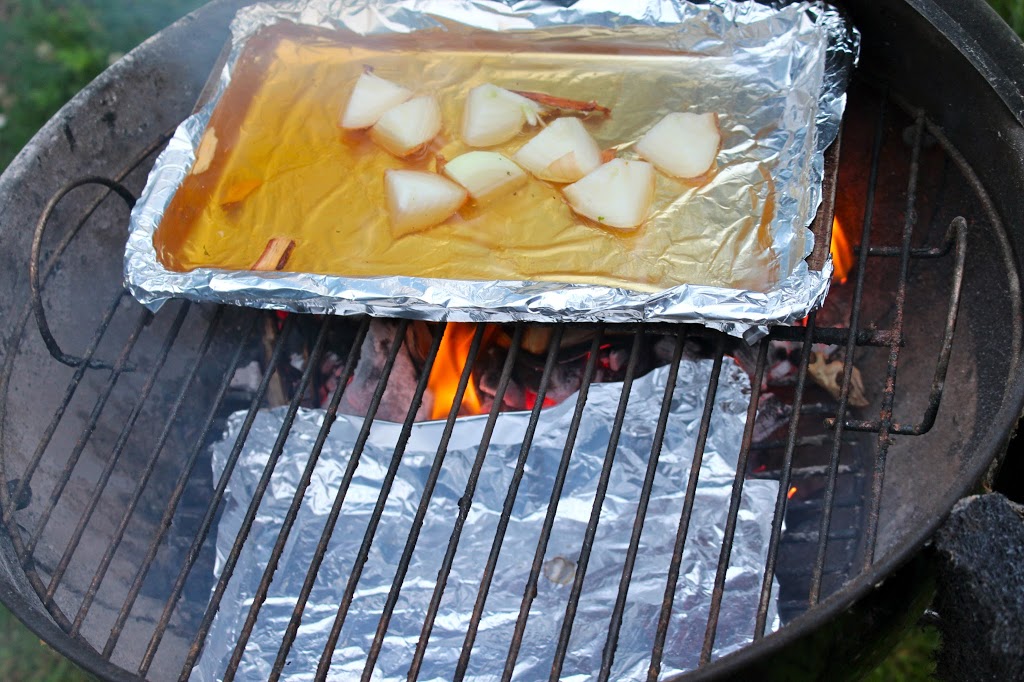 2. Halfway through the smoking process (estimated according to weight) take the ham out and remove the skin (also now called the rind.) You’ll need a sharp knife and tongs for this. Don’t cut off any more fat than you need to– it will be sweet and buttery, so you definitely want to keep it!
2. Halfway through the smoking process (estimated according to weight) take the ham out and remove the skin (also now called the rind.) You’ll need a sharp knife and tongs for this. Don’t cut off any more fat than you need to– it will be sweet and buttery, so you definitely want to keep it!
3. Return it to the smoker to finish smoking. Ours took about 2 hours.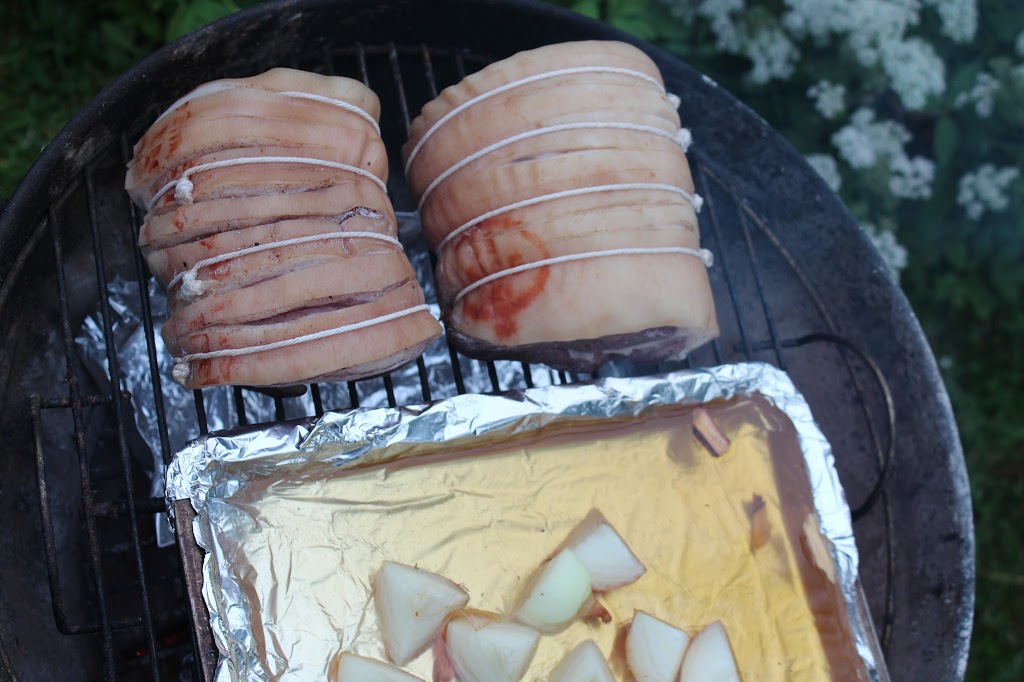

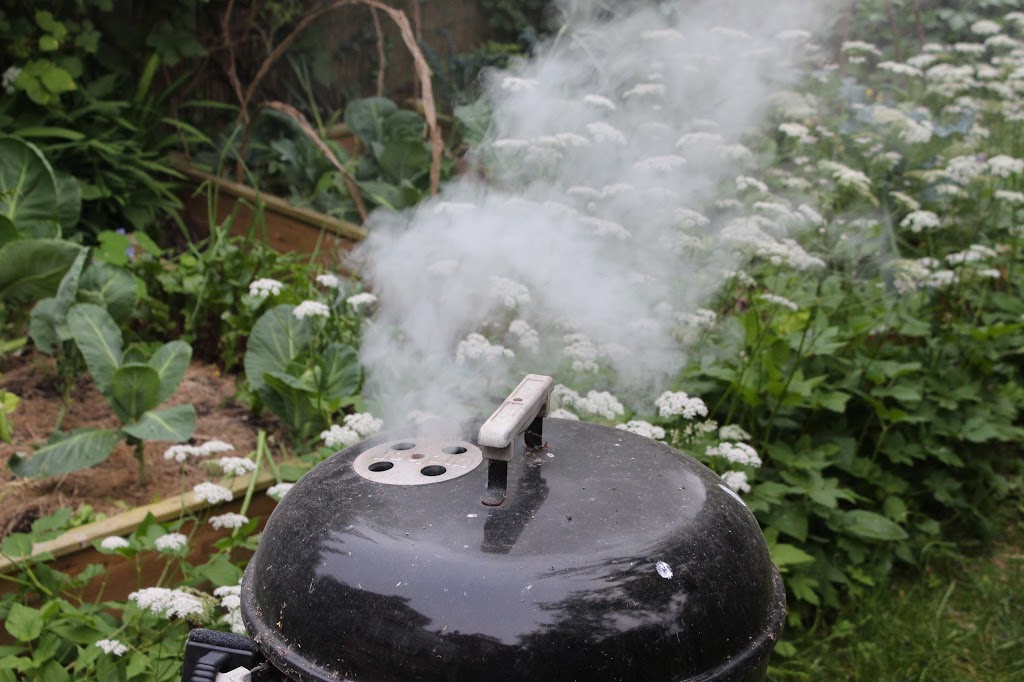 And… you’re done! Let it rest and cool off, and then enjoy that beautiful ham. It should keep for a week in the fridge.
And… you’re done! Let it rest and cool off, and then enjoy that beautiful ham. It should keep for a week in the fridge. It’s the perfect food for picnics and hot summer meals when you don’t feel like doing much cooking.
It’s the perfect food for picnics and hot summer meals when you don’t feel like doing much cooking.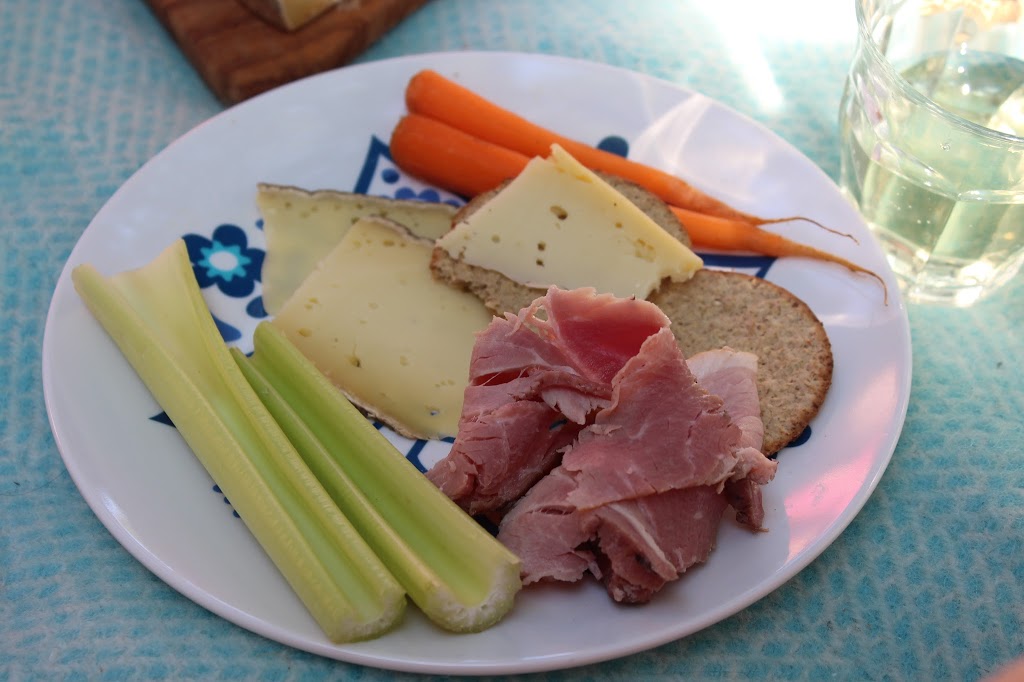 You’ll be so glad you cured and smoked your own ham, and be warned– you’ll be sorely disappointed with store-bought hams forever after.
You’ll be so glad you cured and smoked your own ham, and be warned– you’ll be sorely disappointed with store-bought hams forever after.
For further reading check out my new favorite cookbook Food DIY, which has lots of really cool curing projects. If you are interested in butchery and charcuterie, I think you’ll love seeing photos from the lesson my butcher gave me on breaking down a pig.
Did you like this post? Pin it for later!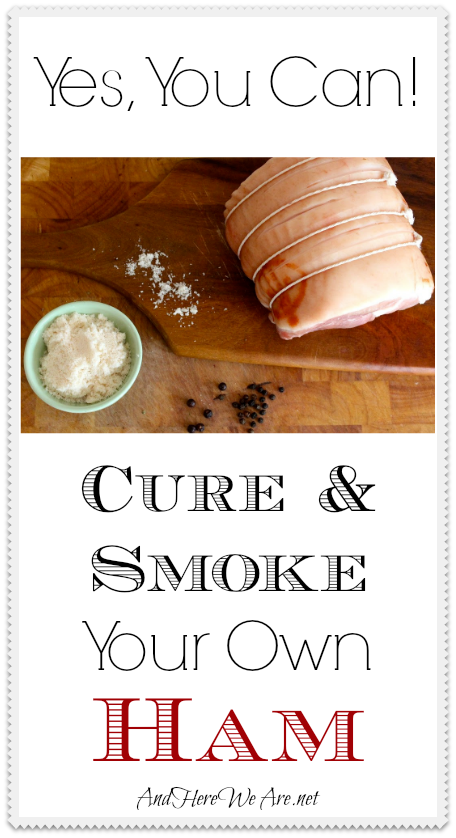


Looks like something that I need to do. I love ham.
Excellent! I am going to show this post to my hubby. I know he will want to do this and thanks for your directions. He has made sausage and bacon, but not ham. We always raise two pigs every summer and this year ours are going to be really big. He is talking about doing ALL the processing himself instead of sending the carcasses to a butcher shop. It just takes time and organization….and a LARGE table such as our dining table! Oh well, he has cut up many elk on it and there was no problem.
This will happen in my kitchen.
We love ham. No doubt about it, I’ll have to try this. I have never smoked anything and always wanted to. Thanks for sharing.
Very cool tutorial Ariana, thanks for sharing on Wildcrafting Wednesday this week. 🙂
Looks delicious! I’ve made Guanciale but still haven’t got round to ham.
I love cured and aged meats, the way the process enhances the flavor profiles are incredible. I’ve decided to build a curing fridge in my home, so I’ve been researching methods of how to build one as well as how to cure meat. I’ve also looked into several temperature measurement systems for my fridge, but I’m not too sure how heavy-duty they need to be.
Great article. Can you tell me do you scrape or wash the mold off before smoking or does it just burn away?
Kris, it will burn off. I usually slice off the very ends of the ham anyway, and between that and cutting the rind off, most of it is gone anyhow.
Can this be cooked any other way than smoked?
Kimara, I haven’t done anything but smoked my hams, but You could definitely try baking or boiling. Let me know how it comes out!
This looks amazing!
After trying several recipes the past few years to make our own ham, this one is finally a winner! Thanks so much for this recipe!
So glad to hear this, Quinn!!
Hi Ariana, Does your butcher do bone in hams as well. I would prefer some info on them if he would be good enough to share his expertice. know injecting is normly done and and then a pickling solution. aAny help would be appreciated. Thanks, K D
I will ask him, Kevin. I haven’t seen any in his case, but he does make them much larger.
Hello.
Can you tell me what the pitt temp was?
I can’t load the video
My husband didn’t go by specific temperature– he waited until the coals were ready (gray), with a cross current of air from beneath the coals to the opposite side on bbq lid. The ham was on the opposite side of the heat source, and the vent in the lid over the ham was open.
Good luck!
Hi when curing my ham faint dark veins appeared through the skin was just wondering if this is normal
Hi Josh,
I am thinking that this is just a result of dehydrating the skin– making it a lot more translucent, so you can see the veins. Personally, I wouldn’t worry about it.
Ok thanks Ariana everything else seems ok so I’ll see how it turns out
2.5 percent cure is nine times higher than the usda guidelines
you are one decimal point off